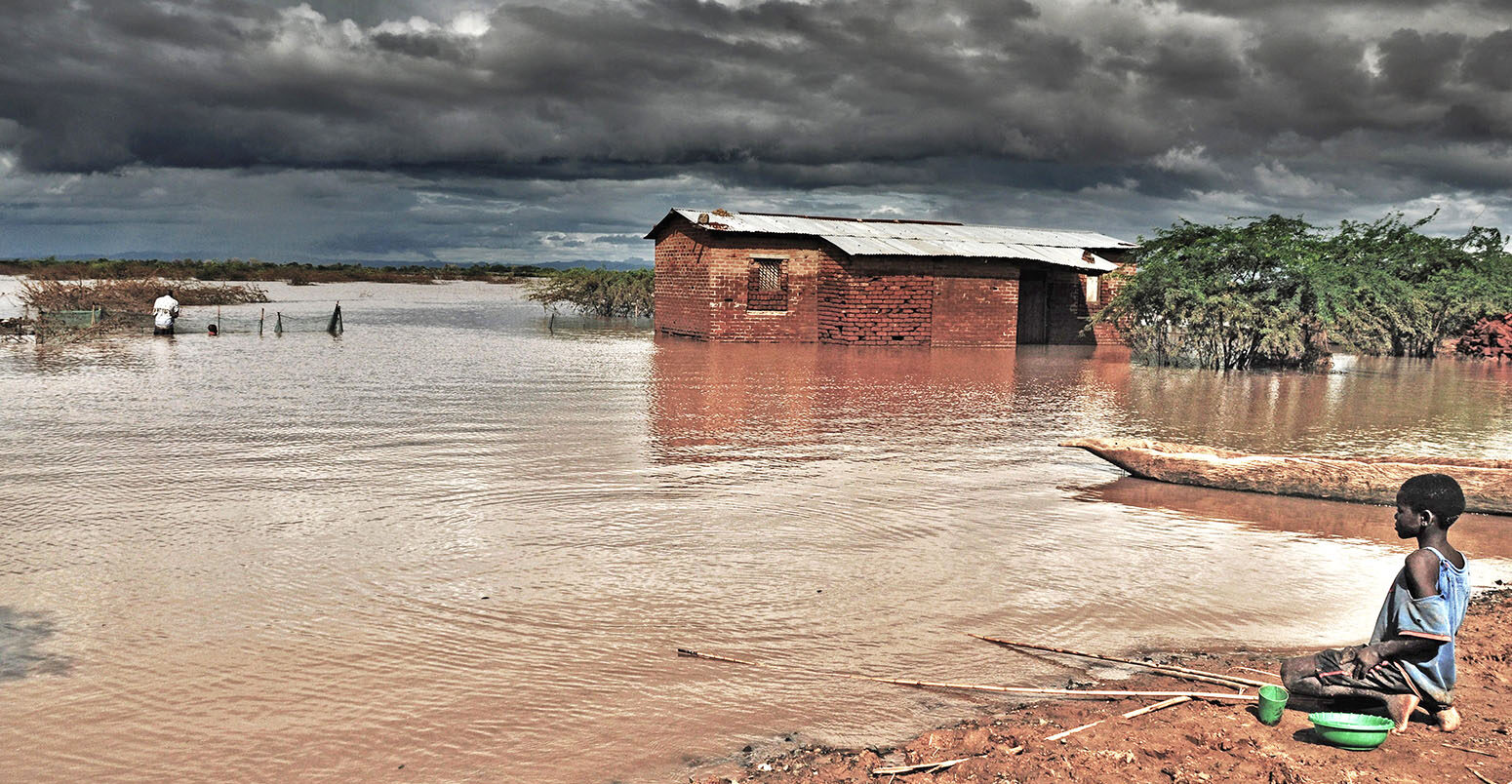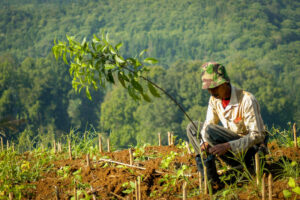
Guest post: Can higher ambition in developed countries create ‘carbon space’ for others?
Multiple Authors
02.21.23Multiple Authors
21.02.2023 | 11:26amThe Paris Agreement was a historic deal that, for the first time, asked all countries to take action towards the collective goal of trying to limit warming to 1.5C.
The deal was made possible by reiterating equity principles that recognise developed countries mostly caused the problem of climate change – and, therefore, need to work hardest to solve it.
Moreover, it gave developed countries the responsibility of not only taking the lead in cutting their emissions, but also of supporting developing countries as they transition away from fossil fuels.
As developed countries have fallen short on both fronts – climate action and finance – a number of developing countries have asserted their claim to a “fair share” of the remaining carbon budget.
In our new paper, published in Environmental Research Letters, we assess what that fair share might look like for Africa and South Asia. These regions have low historical per-capita emissions and, therefore, a strong moral claim to the remaining “carbon space”.
If these regions claim their fair share of the remaining carbon budget, it would leave less room for others. We show that, even if developed countries follow their “highest possible ambition”, they would not be able to make up for such higher emissions in Africa and South Asia.
Instead, we find that the world can only hold warming below 1.5C while South Asia and Africa use their fair share of emissions, if other developing countries were to cede their moral claim to the remaining “carbon space” and also pursue their “highest possible ambition”.
Our findings raise difficult questions around how to reach climate goals equitably and highlight the need for increased international climate finance. If left unresolved, these questions could put the finely balanced architecture of the Paris Agreement – and its goals – at risk.
Paris principles
The Paris Agreement established principles of equity that connect ambitious climate goals with fair paths to achieving them.
Specifically, the Paris text recognises “the principle of equity and common but differentiated responsibilities and respective capabilities, in the light of different national circumstances”.
This key principle is frequently referenced during climate negotiations, where it is often given the shorthand “CBDR-RC”. This recognises that some – largely developed – nations are far more “responsible” for current warming than others. It also acknowledges that some countries are better placed to act, thanks to their “respective capabilities”, including wealth and access to technology.
Consequently, the Paris Agreement requires not only domestic action to cut emissions, but also the fair provision of finance, technology and support, from developed to developing countries.
Yet developed countries’ domestic ambition mostly falls short of what would be needed for 1.5C and they have also consistently failed to meet their promises on providing climate finance.
Meanwhile, equity considerations are left out of most pathways setting out how to stay below 1.5C. The Intergovernmental Panel on Climate Change (IPCC) largely relies on integrated assessment model (IAM) scenarios that focus on cutting emissions cheaply – not necessarily where it is fair.
In this context, some developing countries have called for an equitable distribution of the remaining “carbon space” – a reference to the carbon budget for limiting warming.
The first part of our paper looks at what an equitable “carbon space” would look like for developing countries in South Asia and Africa. These regions have the lowest historical per-capita emissions, giving them a strong moral claim to a larger share of the remaining carbon budget.
Our paper puts specific numbers on this moral claim using different “fair share” approaches. These loosely reflect the Paris Agreement principles of “responsibility” and “capability”.
One approach aims to ensure that cumulative emissions per capita for each region add up to the same amount, by the time the world reaches net-zero. The other looks at GDP per person in purchasing power parity terms to split the remaining carbon budget.
In our analysis we focus on the distribution of the remaining carbon budget. If claims to a future carbon space were based on the historic carbon budget from 1850, then we find that the climate objectives of the Paris Agreement would be unattainable.
Higher ambition
The consequence of South Asia and Africa claiming their fair share of “carbon space” is that other regions would need to cut emissions more quickly, if the world is to stay below 1.5C.
We designed a set of four scenarios, to see if developed countries could make up for this by increasing their domestic ambition. These scenarios were based on the regional emission pathways in the recent Working Group III (WG3) contribution to the IPCC. They combine the following building blocks:
- Africa and South Asia are allocated an equitable share of the remaining carbon budget, according to the alternative approaches to equity set out above.
- Developed regions reduce emissions in line with their “highest possible ambition”. We select the most stringent regional emission reduction pathways in the WG3 scenario database. These pathways, labelled “C1” in the WG3 database, have a greater than 33% likelihood of holding peak warming below 1.5C and a greater than 50% likelihood of ending the century below 1.5C. They are described by WG3 as 1.5C with no or limited overshoot.
- Other developing regions, namely the rest of Asia, the Middle East, Latin America and the Caribbean make more or less stringent emissions cuts. In the stringent scenario, they too follow the highest regional emission reductions in the C1 pathways from the WG3 database. In the less stringent case, they follow the lowest regional emissions reductions in pathways that have a greater than 67% chance of keeping peak warming below 2C, labelled “C3” pathways and described as likely below 2C by the IPCC.
We compared cumulative global emissions when net-zero is reached in these scenarios, across a range of different models, with the remaining carbon budget for 1.5C, taken from WG1 of the IPCC.
The results are shown in the figure below. In each chart, the remaining carbon budget for 1.5C is shown by the horizontal green line (median value), with shading illustrating uncertainty. The columns show cumulative emissions for the world (red) and for each region (other colours).
The open columns represent emissions under the equal-cumulative-per-capita equity scheme, while the hatched columns are for emissions allocated according to capability.
The first insight from this comparison is that cumulative global emissions breach the 1.5C carbon budget in the case where other developing regions make less stringent reductions (left).
This shows that developed regions do not come close to being able to make up for the fair share “carbon space” allocated to South Asia and Africa, even with their “highest possible ambition”.
This phrase is borrowed from the Paris text, which says that each country’s climate pledge should reflect its “highest possible ambition”. Note that it is not possible to say with certainty that the range of ambition in the scenarios assessed by the IPCC is exhaustive, in other words whether our higher bound of action is actually the most ambitious possible.
However, in the left panel above, the cumulative emissions allocated to developed regions are significantly smaller than the excess above the remaining carbon budget. So even if developed regions cut emissions to zero immediately, these scenarios would still breach 1.5C.
This means that other developing regions hold the keys to keeping the window for 1.5C open. Indeed, if these regions follow relatively less stringent ambition (left panel), their cumulative emissions (grey bar) are on their own of a comparable magnitude to the remaining carbon budget.
The second insight is that the equity scheme starts to matter when we assume the other developing regions reduce emissions stringently, similar to developed regions (right panel).
While all scenarios that follow the capability-based equity scheme keep within the 1.5C carbon budget, some scenarios that follow the equal per capita allocation do not achieve this, as shown by the range in the whisker error bars on the column for cumulative global emissions.
Policy implications
Our findings highlight the need to acknowledge and discuss equity in international climate talks, in relation to both emissions reductions and access to finance.
They also suggest that developed regions could raise their targets in line with their “highest possible ambition”, in order to allow for more “carbon space” for developing regions.
However, we find that the Paris Agreement’s climate objectives are firmly out of reach if all developing regions use up their fair share of the “carbon space”. Their willingness to go beyond this, with higher ambition, is likely to depend on adequate support from developed countries.
The Paris Agreement includes the tools necessary to foster global ambition in a fair manner. However, the rapidly depleting carbon budget for 1.5C requires substantial upscaling of ambition on both fronts – mitigation and climate finance. It is not an either-or question.
Failure to deliver on both fronts would lead to the most unequal and unfair outcome: an even warmer world, with escalating impacts that disproportionately affect the vulnerable populations that have contributed the least to climate change.
This could not only put the Paris Agreement’s finely crafted architecture in jeopardy, but also risks breaching its long-term global goal of limiting dangerous climate change.
Ganti et al. (2023) Uncompensated claims to fair emission space risk putting Paris Agreement goals out of reach, Environmental Research Letters, doi: 10.1088/1748-9326/acb502





